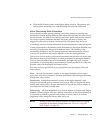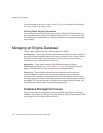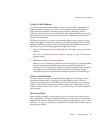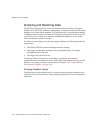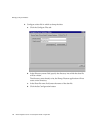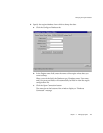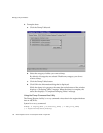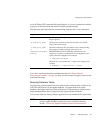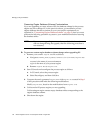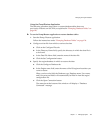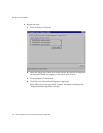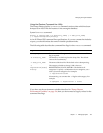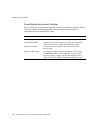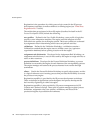
Managing an Engine Database
Chapter 4 Managing Engines 131
As in all iPlanet UDS command line specifications, if you use a name that includes
a space, you should enclose the name in double quotation marks.
The following table describes the command line flags for the
DrDump command:
If you have set the environment variables described in “Dump/Restore
Environment Variables” on page 136, then you do not need to supply values for the
command line flags.
Restoring Database Tables
The following sections describe how to retrieve data which has been written to an
ASCII file and restore it to an engine database. To restore data to an engine
database, the engine must have been cold started. Cold starting an engine creates
empty database tables that correspond to the engine database schema.
You can use either the Dump/Restore application or its command-line equivalent.
Flag Description
-e engine_name The name of the iIS engine in the current environment. This
flag is required.
-d directory_name The directory in which to place the data files. The default
value is the root directory.
-v data_file_name The name of the data file. The default value is dumprest.log.
-t
registration|state|
history
The category of tables to dump. Valid values are
REGISTRATION, STATE, HISTORY. The default is all
categories. To specify a combination of two categories, use a
colon (:) between categories. For example:
-t registration:state
Alternatively, you can enter the -t flag for each category. For
example:
-e myEngine -t registration -t state
NOTE If you are upgrading to a new release and have customized your
process engine database schema, be sure to read the following
section, “Preserving Engine Database Schema Customizations.”



